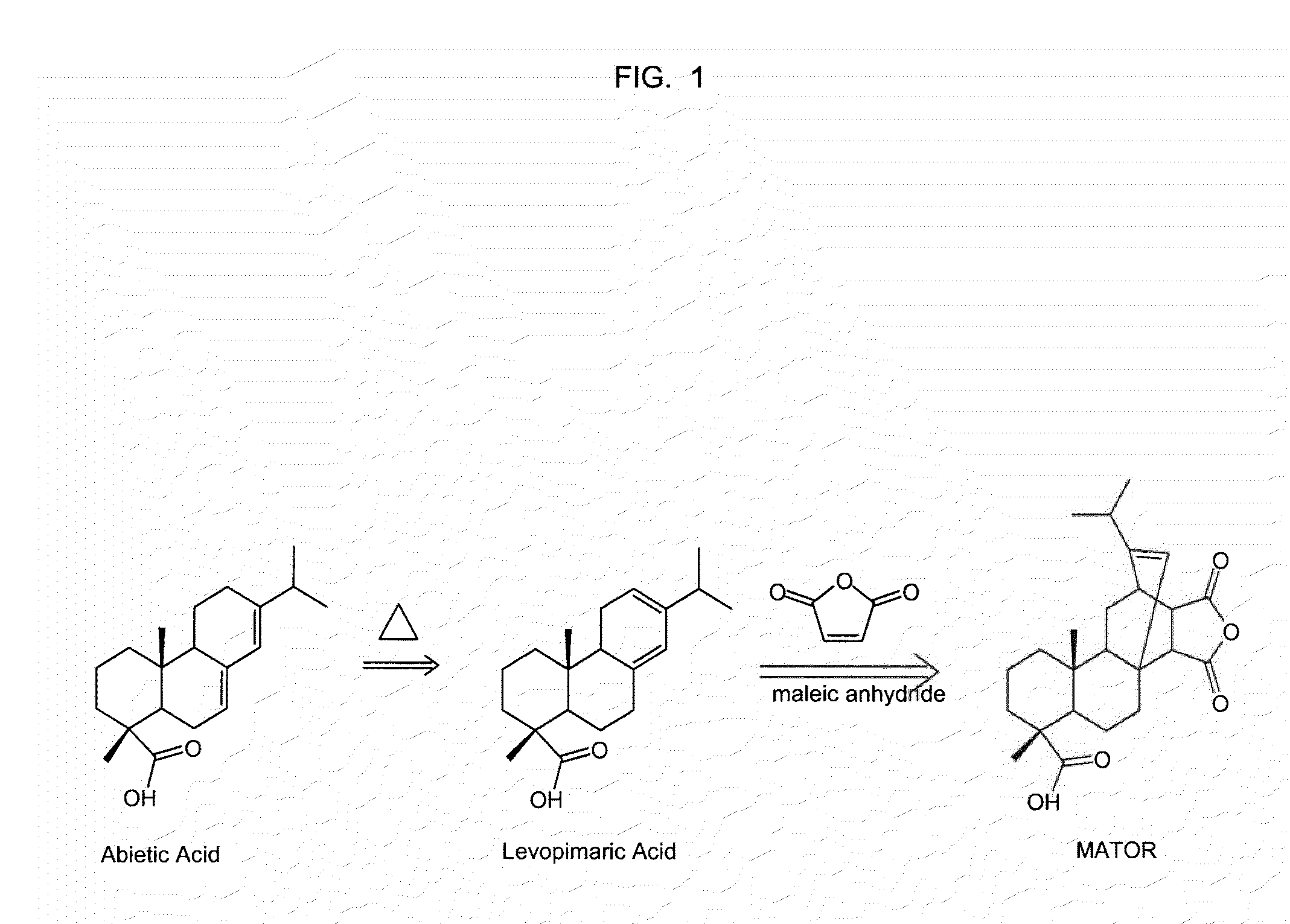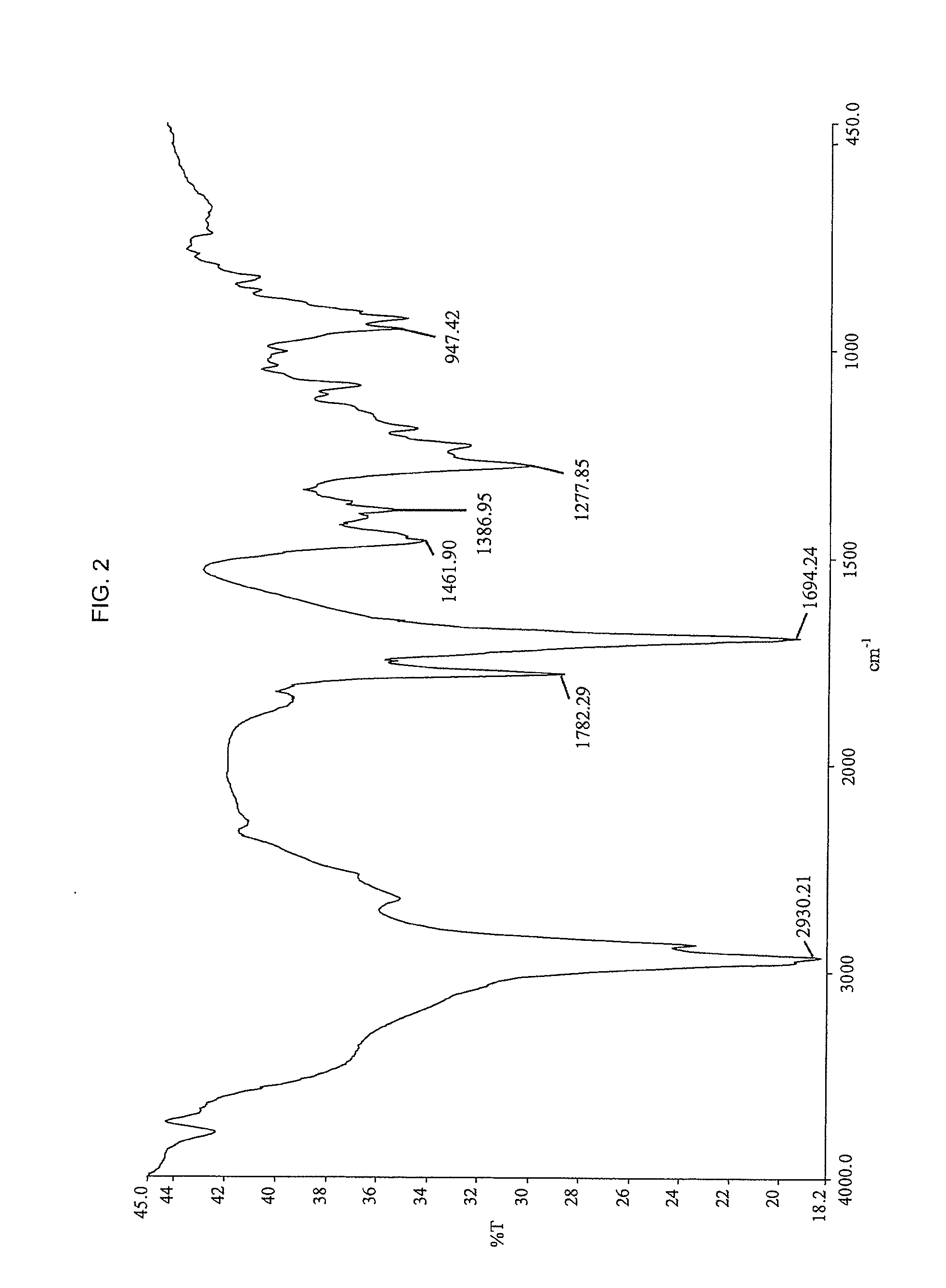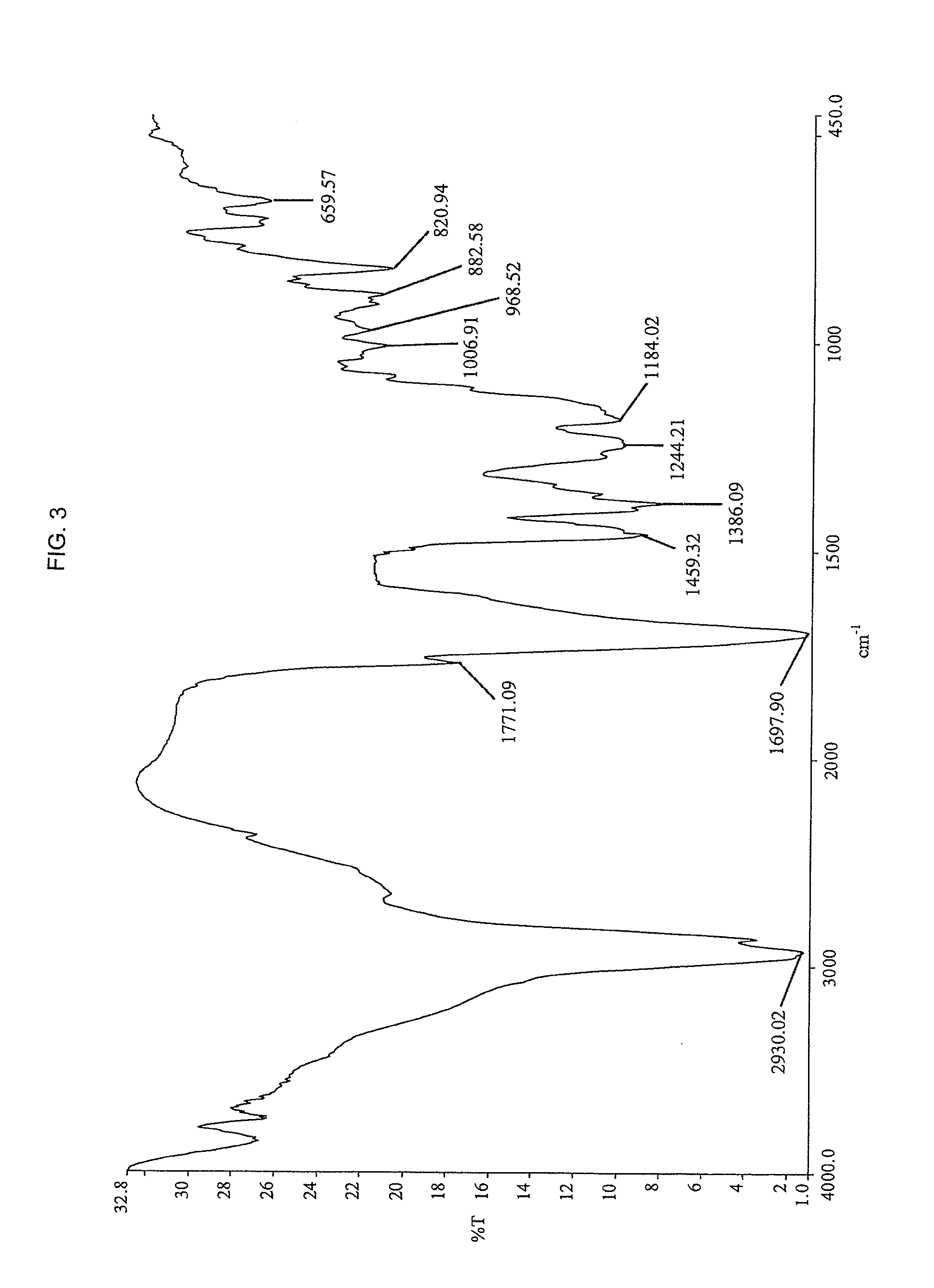Imidized and amidized rosin compositions for paper sizes and other applications
a technology of rosin composition and composition, which is applied in the field of modified rosins, can solve the problems of poor performance of conventional rosin sizing of paper, limited to acidic ph, and achieve the effect of lowering the softening poin
- Summary
- Abstract
- Description
- Claims
- Application Information
AI Technical Summary
Problems solved by technology
Method used
Image
Examples
examples 1-19
Preparation of Rosin Reaction Products
A one liter resin kettle was equipped with a nitrogen feed and outlet, a temperature control probe, an agitator, a water-cooled condenser and receiver, and a stopper which could be removed for addition of ingredients. The agitator was outfitted with two blades: a radial blade on top and an axial blade on bottom. The agitator shaft was fixed so that the bottom blade was in the middle of the mixture, and the top blade was only halfway immersed. A heating mantle with attached temperature control was used to heat the mixture. The nitrogen flow was maintained at a level sufficient to reduce oxygen levels in the reaction vessel so that oxidation of the MATOR was minimal and the water produced in the reaction was carried out of the resin kettle.
Six hundred grams of solid MATOR chunks (made with 11.8% maleic anhydride by weight relative to the weight of rosin) were added to the resin kettle. The MATOR was melted and brought to a temperature of 200° C., ...
examples 20-31
Preparation of Rosin Reaction Products
The rosin reaction was repeated as described in the Examples above, with the specifics indicated in Table II, below, using the liquid (non-polymer) amines as indicated. Because the amines were liquid, there was no need to heat the syringe used to add the amine. The ratios of amine to MATOR and characteristics of the final products are as listed below.
TABLE IIProperties of Modified Rosins.wt %wt %Soften-Exam-AcidicAmineingAcidpleCom-Com-PointNumberNumberRosinAminepoundpound(° C.)(mg / g)20MATORtert-butyl13.614105.6156.3amine21MATOR3-dimethyl13.614105.5136.2aminopropylamine22MATORn-butyl13.613.676135.9amine23MATORn-butyl13.61484.6136.9amine24MATORethanol13.613.676.5133.1amine25MATORdiethyl13.614101.8207.7amine26MATORdibutyl13.61482.9165amine27MATOR1,6-diamino13.614124.3121.7hexane28MATORpropylamine13.613.681.8137.229MATORaniline13.614ND*ND**ND = could not determine
example 30
Rosin Adducts with Triethanolamine
In Example 30, rosin resin was prepared as described for Examples 21-30, but following the disclosures of U.S. Pat. No. 4,540,653, using triethanolamine as the amine. Triethanolamine is a tertiary amine, and the reaction produces an ester linkage, and therefore not an imide or an amide. The ratio of triethanolamine:MATOR was 8%.
TABLE IIIProperties of Triethanolamine Rosin Adduct.wt %wt %Soften-Exam-AcidicAmineingAcidpleCom-Com-PointNumberNumberRosinAminepoundpound(° C.)(mg / g)30MATORtrietha-11.88112.5142.6nolamine
PUM
| Property | Measurement | Unit |
|---|---|---|
| temperature | aaaaa | aaaaa |
| pH | aaaaa | aaaaa |
| temperatures | aaaaa | aaaaa |
Abstract
Description
Claims
Application Information
 Login to View More
Login to View More - R&D
- Intellectual Property
- Life Sciences
- Materials
- Tech Scout
- Unparalleled Data Quality
- Higher Quality Content
- 60% Fewer Hallucinations
Browse by: Latest US Patents, China's latest patents, Technical Efficacy Thesaurus, Application Domain, Technology Topic, Popular Technical Reports.
© 2025 PatSnap. All rights reserved.Legal|Privacy policy|Modern Slavery Act Transparency Statement|Sitemap|About US| Contact US: help@patsnap.com



